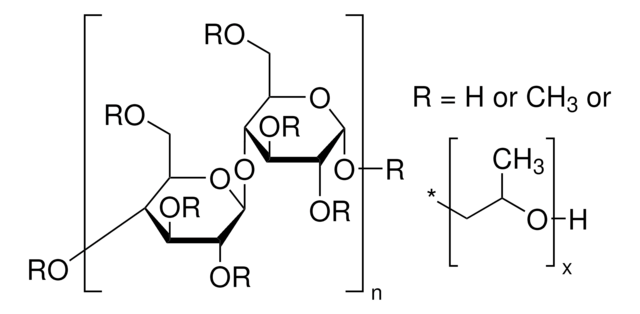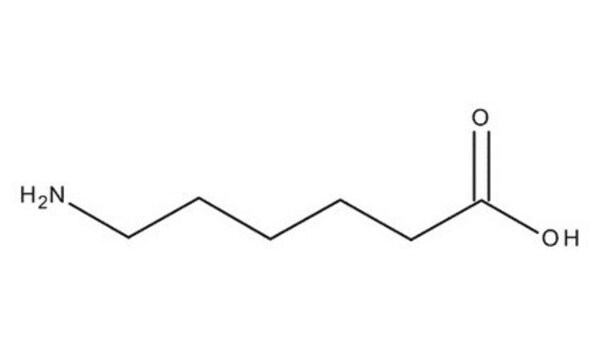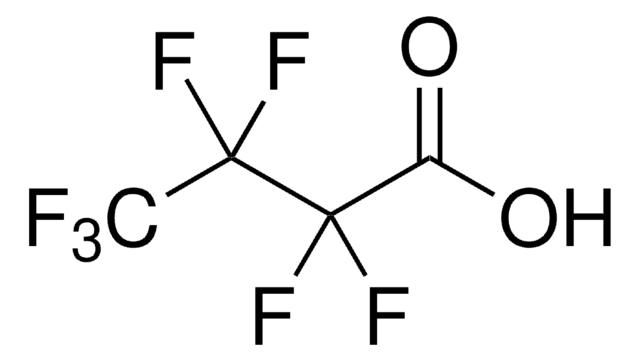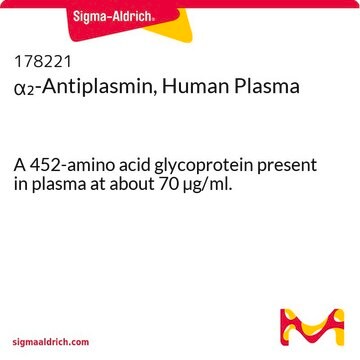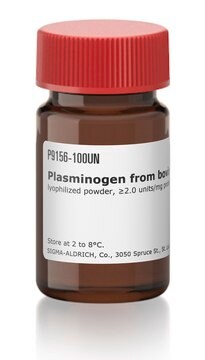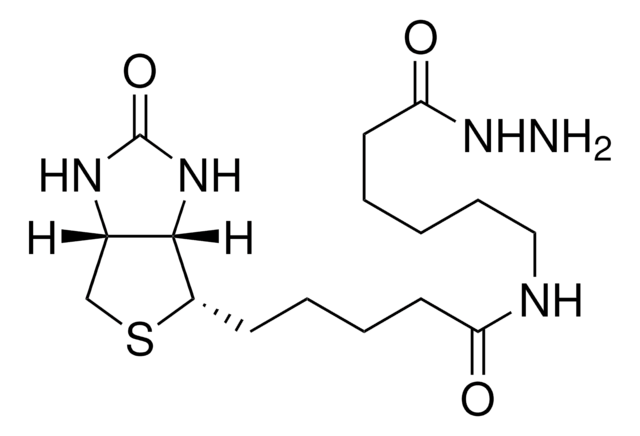A7824
6-Aminocaproic acid
BioUltra, ≥99%
Synonym(s):
ε-Aminocaproic acid, 6-Aminohexanoic acid, EACA
About This Item
Recommended Products
biological source
synthetic (organic)
Quality Level
product line
BioUltra
Assay
≥99%
form
powder
technique(s)
cell culture | mammalian: suitable
impurities
≤0.005% Phosphorus (P)
≤0.1% Insoluble matter
ign. residue
≤0.1%
mp
207-209 °C (dec.) (lit.)
solubility
H2O: 0.5 M, clear, colorless
anion traces
chloride (Cl-): ≤0.05%
sulfate (SO42-): ≤0.05%
cation traces
Al: ≤0.0005%
Ca: ≤0.005%
Cu: ≤0.0005%
Fe: ≤0.0005%
K: ≤0.005%
Mg: ≤0.001%
NH4+: ≤0.05%
Na: ≤0.02%
Pb: ≤0.001%
Zn: ≤0.0005%
storage temp.
room temp
SMILES string
NCCCCCC(O)=O
InChI
1S/C6H13NO2/c7-5-3-1-2-4-6(8)9/h1-5,7H2,(H,8,9)
InChI key
SLXKOJJOQWFEFD-UHFFFAOYSA-N
Gene Information
human ... PLAT(5327) , PLG(5340)
rat ... Ppm1a(24666)
Looking for similar products? Visit Product Comparison Guide
Biochem/physiol Actions
Not finding the right product?
Try our Product Selector Tool.
Storage Class Code
11 - Combustible Solids
WGK
WGK 2
Flash Point(F)
404.6 - 408.2 °F
Flash Point(C)
207 - 209 °C
Personal Protective Equipment
Choose from one of the most recent versions:
Already Own This Product?
Find documentation for the products that you have recently purchased in the Document Library.
Customers Also Viewed
Our team of scientists has experience in all areas of research including Life Science, Material Science, Chemical Synthesis, Chromatography, Analytical and many others.
Contact Technical Service